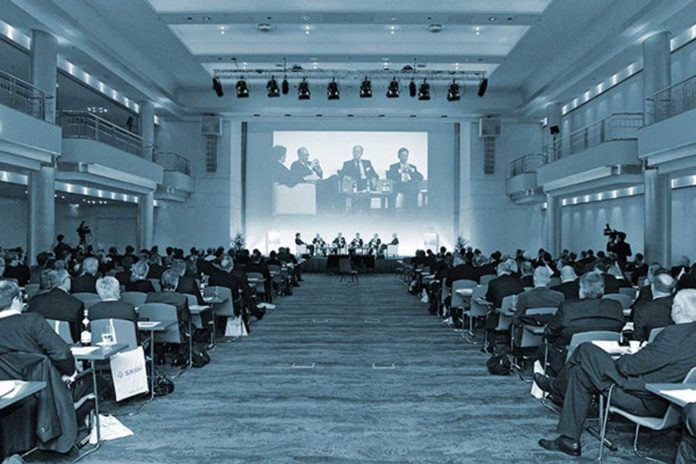
Shipping may see some more »stormy« times [ds_preview]on the road to recovery, research and consultancy firm Maritime Strategies International (MSI), says today at the »HANSA-Forum Shipping | Financing« in Hamburg.
Speaking at the 20th edition of the event, MSI´s Senior Analyst James Frew forecasts uneven supply/demand trends set to test the nerve of investors and operators. He warned that the industry will continue to face multiple challenges to a sustained recovery despite positive demand fundamentals.
»The commodity shipping sectors remain well correlated with each other – with the exception of offshore and LPG – and most sectors are positively correlated, but not tightly so,« he argues. »So the question is whether it is supply or demand that is wrecking the markets?«

For him, in demand termns, the key to the future directions is not so much fundamentals but the headline trade in goods and services, which has stalled in relation to GDP and policy decisions. Factors including increased energy efficiency, slowing containerisation demand and reshoring would all be threats. However, the demand side would be far from all bad news.
»How many ships are needed to meet demand projections is a function of multiple factors; routes taken and their distance, sailing speed, port waiting times, operating days, ballast ratio, cargo carrying capacity and vessel size changes,« adds Frew. »Taking these factors into account, incremental vessel requirements until 2019 show that more ships are needed to meet projected demand in sectors such as oil, product and chemical tankers, bulk carriers and containerships.«
According to MSI data, ships required versus ships on order exceed projected demand for product tankers and chemical carriers but lag for bulk carriers and containerships. This would be »thanks to the industry’s self-prescribed medicine«, with 2016 scrapping levels at or near record levels in the bulk carrier and containership sectors.
»The elephant in the room remains shipyard capacity. The ‘addition’ phases of 2000-2010 and 2014-2016 have not been balanced by the subsequent contractions and capacity elasticity remains a threat to supply/demand balance,« the analyst says.
Looking to future prospects, Frew adds that it would be clear that historical average earnings are no guide to forward earnings. Mean Absolute Percentage Error calculations for a 1yr T/C rate on a Panamax bulk carrier fluctuate wildly between the 5 and 10 year average and in historical terms since 1970.
»The recovery is going to be uneven at best, with a disproportionate increase in vessel earnings for LNG carriers, tankers and LPG carriers. Even with improvements, earnings for containerships and bulkers will not approach their pre-crisis highs,« Frew argues. »Shipyards will continue to suffer from a lack of forward cover next year and only cost pressure will stop newbuilding prices falling further in 2018.«
















